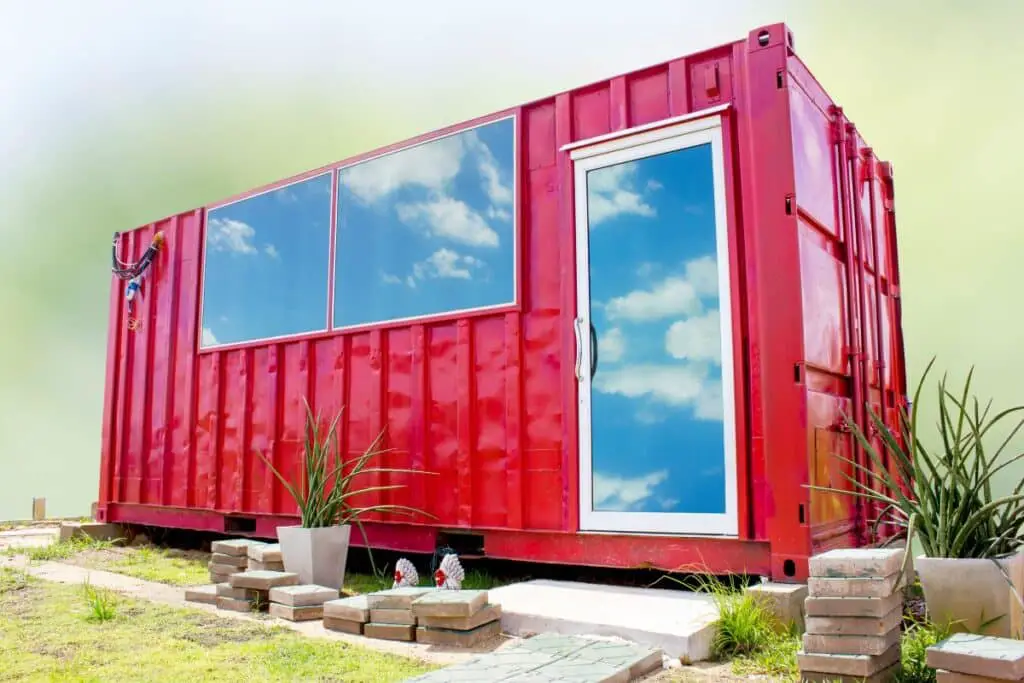Shipping container homes have gained a lot of popularity in recent years as an affordable and eco-friendly housing option. However, many people are worried if they’re safe or not.
Shipping container homes are safe as long as proper precautions are taken during the construction process to address potential safety hazards, such as toxic chemicals and structural integrity.
In this article, we’ll explore the safety of shipping container homes and what factors you should consider before building or buying one.
Quick Navigation
- How Safe Are Shipping Container Houses?
- What Makes Shipping Container Homes Dangerous?
- How To Safely Live In A Shipping Container Home
- Should You Live In A Shipping Container Home?
- In Conclusion
How Safe Are Shipping Container Houses?
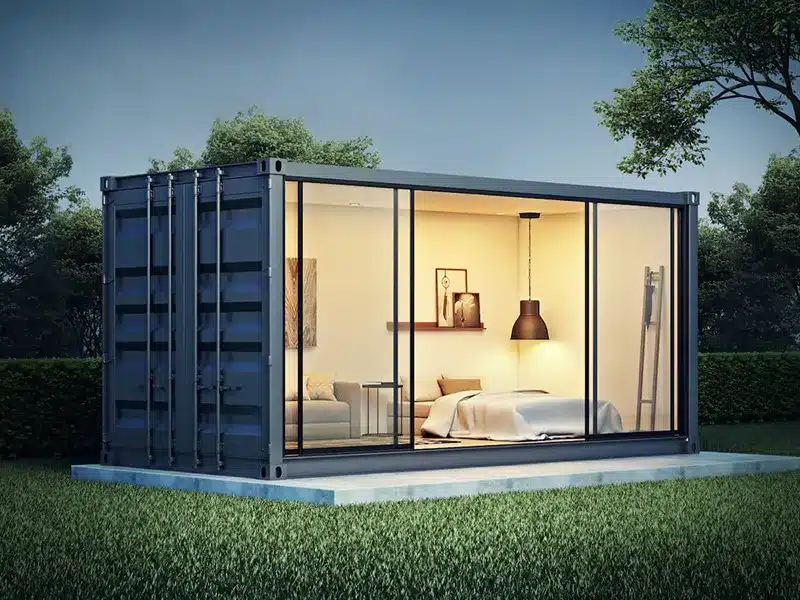
Living in a shipping container home can be safe if certain factors are taken into consideration during the construction process. Here are some reasons why living in steel shipping containers can be safe:
Durability
Shipping containers are made of strong and heavy steel and are built to withstand the rigors of transportation, including harsh weather conditions and rough handling.
When properly designed and constructed, shipping container homes can be just as sturdy and durable as traditional homes.
Fire Resistance
Steel is a non-combustible material, making shipping containers fire-resistant. This is especially important for areas prone to wildfires, where traditional homes may be more vulnerable.
Structural Integrity
Steel shipping containers are made to withstand heavy loads, including the weight of several containers transported stacked on top of one another.
This strengthens their structural integrity and enables them to support heavier loads, such as the weight of a roof or an additional story.
Eco-Friendly
Shipping container homes are an eco-friendly housing option. By repurposing used shipping containers, you are reducing waste and recycling materials, which is good for the environment.
Apart from that, shipping and storage containers are made of durable materials, such as steel, that can last for decades. By repurposing these materials, shipping container homes promote sustainability by reducing the need for new resources and materials.
They’re also eco-friendly because of their reduced carbon footprint. Remember, shipping containers are repurposed instead of being melted down and made into new materials.
Many shipping container homes incorporate renewable energy sources, such as solar panels or wind turbines, to power the home. This further reduces the environmental impact of the home and promotes sustainable living.
Flexibility
Steel shipping container homes are flexible and can be designed to meet specific safety requirements. For example, windows and doors can be reinforced for increased security, and insulation can be added for better temperature control.
What Makes Shipping Container Homes Dangerous?
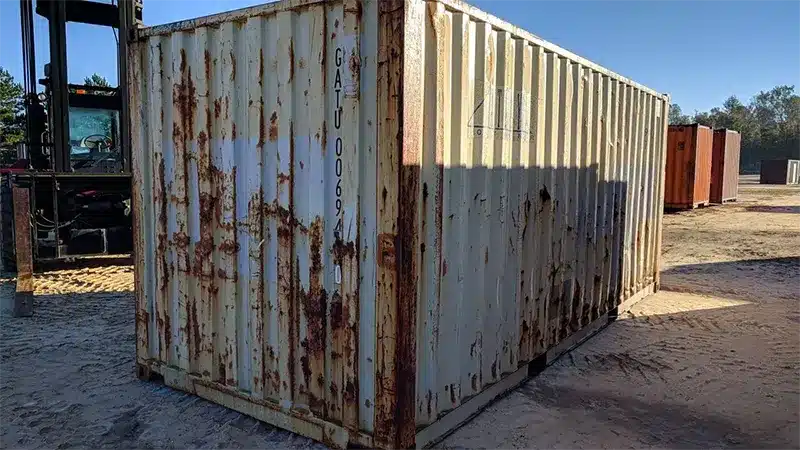
One of the concerns with container housing is the potential for toxic and hazardous chemicals to leach from the container’s walls and floor into the living space.
Shipping containers are typically treated with a variety of chemicals to protect them from saltwater corrosion and other hazards during transport. Some of these chemicals include:
- Chromate and phosphate-based paints
- Insecticides and pesticides
- Volatile organic compounds (VOCs)
- Heavy metals such as lead and cadmium
If these chemicals are not removed or sealed properly, they can leach into the living space and pose a risk to human health. Exposure to these chemicals can lead to a range of health problems, including respiratory issues, skin irritation, and neurological damage.
How To Safely Live In A Shipping Container Home
To mitigate the risks of chemical exposure in repurposed shipping containers, it is important to take certain precautions. Below are some of the ways to minimize the risk of harmful chemical exposure in shipping container homes:
Choose New Shipping Containers
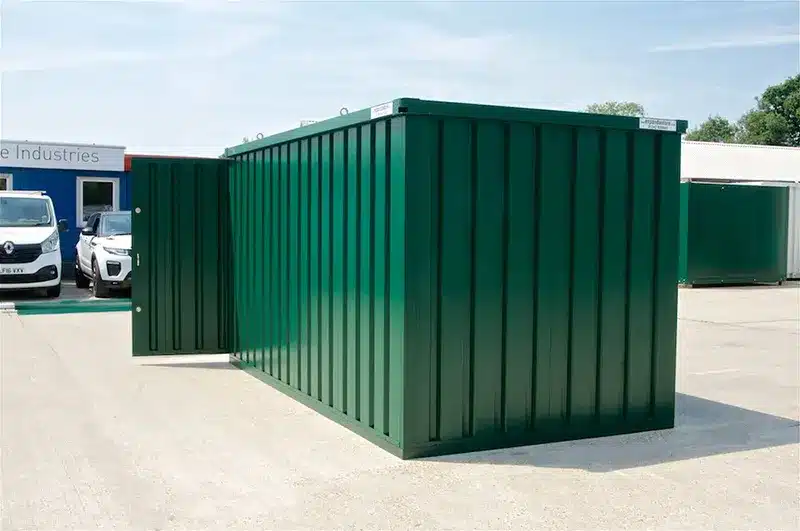
Compared to used containers, new shipping containers are less likely to have been exposed to toxic and dangerous chemicals. Older ones are obviously unhealthy because they may have been exposed to chemicals, like toxic paint, during their previous use.
Use Low VOC Paints and Sealants
Use low-VOC or zero-VOC paints and sealants to reduce the amount of toxic chemicals in the living space.
Now, what are these products?

Low-VOC or zero-VOC paints and sealants are products that contain significantly lower levels of volatile organic compounds (VOCs) than traditional paints and sealants.
VOCs are chemicals that are released into the air as the paint or sealant dries. They can contribute to indoor air pollution and health problems.
These paints and sealants are formulated with alternative, safer ingredients that emit fewer VOCs. Most of them are made with water-based or natural oil-based ingredients, rather than the petroleum-based solvents found in traditional paints and sealants.
Low-VOC paints and sealants are typically defined as products that contain no more than 50 grams of VOCs per liter of paint or sealant, while zero-VOC products contain no more than 5 grams of VOCs per liter.
Using low-VOC or zero-VOC paints and sealants in a shipping container home can help reduce indoor air pollution and the risk of health problems associated with exposure to VOCs.
These products are also better for the environment, as they emit fewer harmful chemicals during production and use.
Remove Existing Paint
This is an important step in reducing the risk of chemical exposure in a shipping container home. The existing paint may contain lead, which can be hazardous to human health, especially for children and pregnant women.
Seal the Container
Apply a high-quality sealant to the interior of the container to prevent any residual chemicals from leaching into the interior space.
Test for Toxins
Have the container tested for toxins before using it as a shipping container house. This can be done by a professional testing service to ensure that no toxic substances and chemicals cause health risks.
Maintain Good Ventilation
Proper ventilation is important to prevent the buildup of chemicals in a shipping container house. It is recommended to install ventilation fans or open windows to ensure good airflow.
Should You Live In A Shipping Container Home?
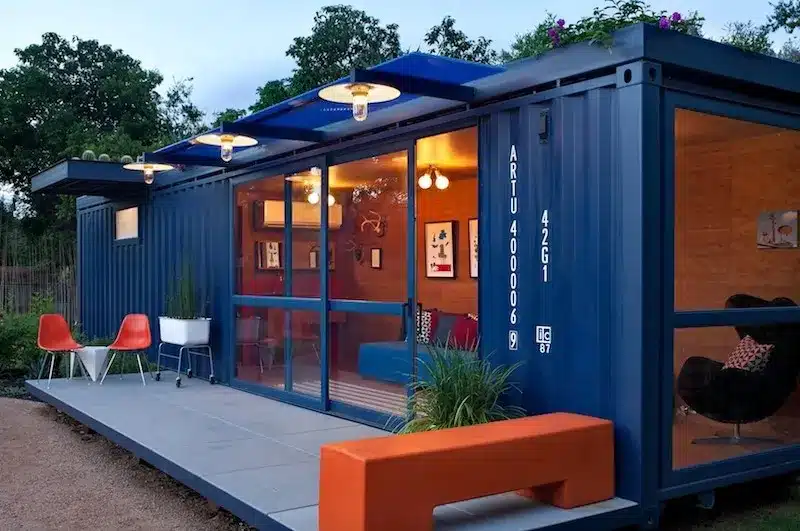
The answer to this question will ultimately depend on you, what you need, and what you want. While shipping container houses have many benefits, they also have some potential drawbacks.
Below is a list of pros and cons to help you decide:
Pros
Affordability: How much do container homes cost? Shipping container homes can be an affordable alternative to traditional houses. Containers can often be purchased for a fraction of the cost of a typical home, and the construction costs are often lower as well.
Eco-Friendly: Shipping container homes are an eco-friendly housing option. By using recycled containers, they help reduce waste and promote sustainability.
Customizability: Large shipping containers can be customized to fit the unique needs and preferences of the homeowner. They can be designed in a variety of configurations and styles, and can be modified to include features such as windows, doors, and insulation.
Durability: Extreme weather and rough handling during transport are not a concern for shipping containers. They are strong and long-lasting because they are frequently made of premium materials like steel.
Mobility: A shipping container home can be designed to be mobile, which makes them ideal for people who want to move frequently or live in remote locations.
Cons
Limited Space: Shipping containers are typically small and narrow, which means that they may not provide enough space for some people. This can be especially true for families or individuals who require more living space.
Insulation: The original structure of shipping containers are not naturally insulated. This can make them uncomfortable to live in during extreme weather conditions.

Insulation must be added to the walls, floor, and ceiling to regulate temperature and maintain comfort.
Permits and Zoning: Depending on where you live, you may need to obtain permits or meet certain zoning requirements in order to build or live in a shipping container home.
This is usually done as part of the site preparation. The extra time and added expense to the process can be huge drawbacks for some people.
Limited Resale Value: Shipping container homes may not have as high of a resale value as traditional houses. This makes them a less appealing investment for some people.
Potential Health Concerns: As mentioned earlier, used shipping containers may contain toxic chemicals that can pose a risk to human health if not properly addressed.
In Conclusion
Shipping container homes are a unique and innovative housing option that offer several benefits. They are eco-friendly, affordable, customizable, and durable. However, they also have some potential drawbacks such as limited space, insulation issues, and safety concerns.
Despite these limitations, shipping container homes have become increasingly popular and have the potential to provide a sustainable solution to the affordable housing crisis.
Ultimately, whether a shipping container home is the right choice for you depends on your needs and preferences, as well as your willingness to address any potential challenges that may arise.

